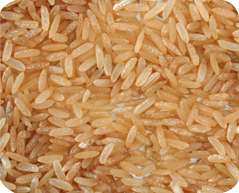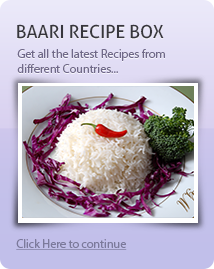

Brown Rice

Brown rice is unpolished whole grain rice that is produced by removing only the hull or husk using a mortar and pestle or rubber rolls. It may be distinctly brown, reddish or purplish. The embryo may or may not be left intact depending on the hulling process. It becomes milled or white rice when the bran layer is stripped off in the milling or whitening process. Thus, the distinguishing factor should be its unpolished feature and not the color.
Why is brown rice better than white rice?
Brown rice is loaded with vitamins and minerals not available in white rice. Unknown to many, the bran layer contains very important nutrients such as thiamine, an important component in mother's milk.
Brown rice is also rich in fiber and essential oils. Fiber has been involved in the prevention of major diseases such as gastrointestinal and heart diseases. The essential oils in the bran have also been known to prevent heart diseases because these decrease serum cholesterol, which is a major risk factor in heart disease.
Some pharmacological studies have shown that phytate, a component of brown rice known to inhibit iron absorption, may on the contrary, prevent cancer. This, however, needs further investigation. Phytate can also lower one or more of the following: glucose, insulin, cholesterol, and triglycerides. Although phytate reduces mineral absorption, this can be easily mitigated by eating fruits and vegetables rich in vitamin C.
Milled Rice
The milling degree of rice is divided into four, namely
- Extra Well Milled means the milling of paddy from which the husk, the germ, and the outer bran layers together with the inner ones (cargo and white meal) have been completely removed ( to the extent that the appearance of the kernel is translucent).
- Well Milled means the milling of paddy from which the husk, the germs, and both of its outer and inner bran layers (cargo and white meal) have been entirely removed to a degree that the translucence of the kernel is slightly less than that of extra well milled rice.
- Reasonably Well Milled means the milling of paddy from which the husk, the greater parts of the germ and of both of its outer and inner bran layers (cargo and white meal) have been removed to a certain extent that the kernel presents its moderate translucence in a degree less than that of well milled rice.
- Ordinarily Milled means the milling of paddy from which the husk and certain parts of the germ and the whole part of its outer bran layers (cargo meal) have been removed with some part of its inner bran layers (white meal) remain intact. The degree of its translucence is moderate and being less than that of reasonably well milled rice.

